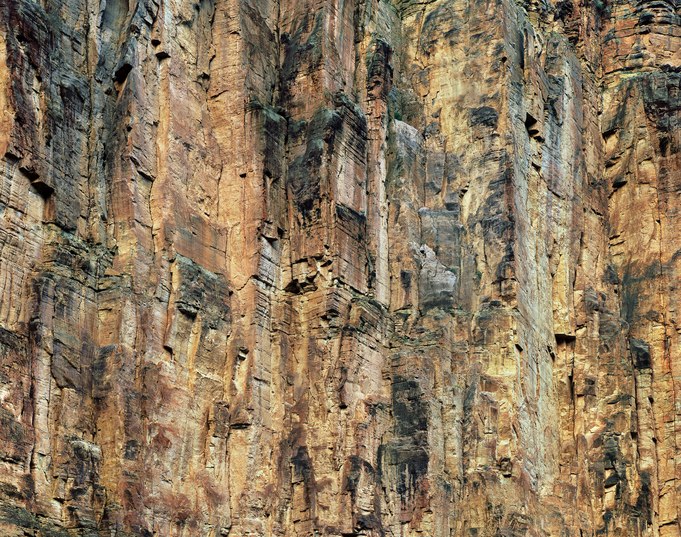Parashant Canyon lies at the western end of Arizona's Grand Canyon National Park. Here, the Colorado Plateau, Mojave Desert, and Basin and Range country meet, with each ecoregion hosting unique landforms and life forms. While rafting on the Colorado River, I took passage through a deeply carved landscape to explore and photograph the subterranean core of this botanically and geologically diverse region.
Originating from the Paiute word Pawteh' ee oasoasant, meaning "tanned elk hide," the canyon's sheer, towering walls exhibit a patinated facade that echoes the warm hues and coarse texture of stretched and dried animal hide. The muddy remnants of organisms that once flourished in ancient oceans and shorelines—such as sponges, corals, mollusks, and worms—form the wall’s countless layers. Over the past 500 million years, the accumulated sediment has been compressed and solidified into limestone, mixed with sandstone and shale beds, and then shifted and shaken along fault lines.
Its fractured walls reveal ancient fossils, including the "Book of Worms," a section of rock filled with thick calcified worm burrows at the base of this wall. In his book “The Grand Canyon of the Colorado,” naturalist John Muir wrote: "The whole canyon is a mine of fossils … forming a grand geological library – a collection of stone books … And with what wonderful scriptures are their pages filled – myriad forms of successive floras and faunas, lavishly illustrated with colored drawings, carrying us back into the midst of the life of a past infinitely remote … ."
Location research and commentary by James Baker.

